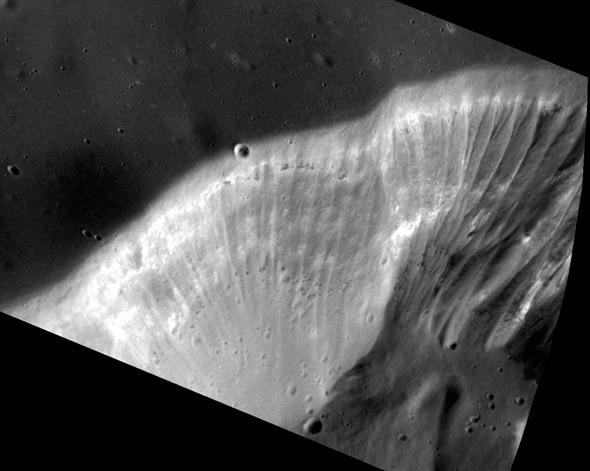Create a free profile to get unlimited access to exclusive videos, sweepstakes, and more!
The Last Days of MESSENGER

The MESSENGER Mercury probe is in the news again, this time for two somewhat related items. The spacecraft has been orbiting the closest planet to the Sun since March 2011, just over four years ago, and has been returning amazing data ever since.
It achieved a numerical milestone recently: its 4,000th orbit of the little world. In that time it’s sent over a quarter million images of Mercury back to Earth, an astonishing feat. Because Mercury is so close to the Sun, it’s hard to study from Earth, and it’s also difficult to get a spacecraft into orbit. Mariner 10 flew past the planet in the 1970s, but MESSENGER was first to orbit Mercury—after three flybys, and a gravity assist from both Earth (once) and Venus (twice).
And it comes just in time. MESSENGER is doomed. Because Mercury is so close to the Sun (about 58 million kilometers), the Sun’s gravity pokes at MESSENGER, changing its orbit. It uses hydrazine propellant to alter its orbit, but it's out of fuel. The last orbital maneuver on April 6 used up the remaining hydrazine in its tanks. All that's left is helium (used to keep the tanks pressurized); that can be used as a propellant, but it's not terribly efficient. A few more "burns" are planned to raise its minimum distance above the surface, but they will only add a bit of time to MESSENGER's life. It's not clear when exactly, but sometime in late April or early May the probe is expected to crash into the planet’s surface.
This is inevitable, and was understood by the scientists and engineers on the team even during mission planning. They even are taking advantage of it! MESSENGER has been getting as low as 13 to 17 km from the surface, and the adjustments have kept that distance from 39 to as low as an astonishing 5 km above Mercury. The images taken during this time will be the highest resolution of the mission.
It’s been a great four years, filled with exciting new discoveries and gorgeous pictures of Mercury. I’m glad to see that the team is squeezing every last drop of science they can from the mission before the end.














